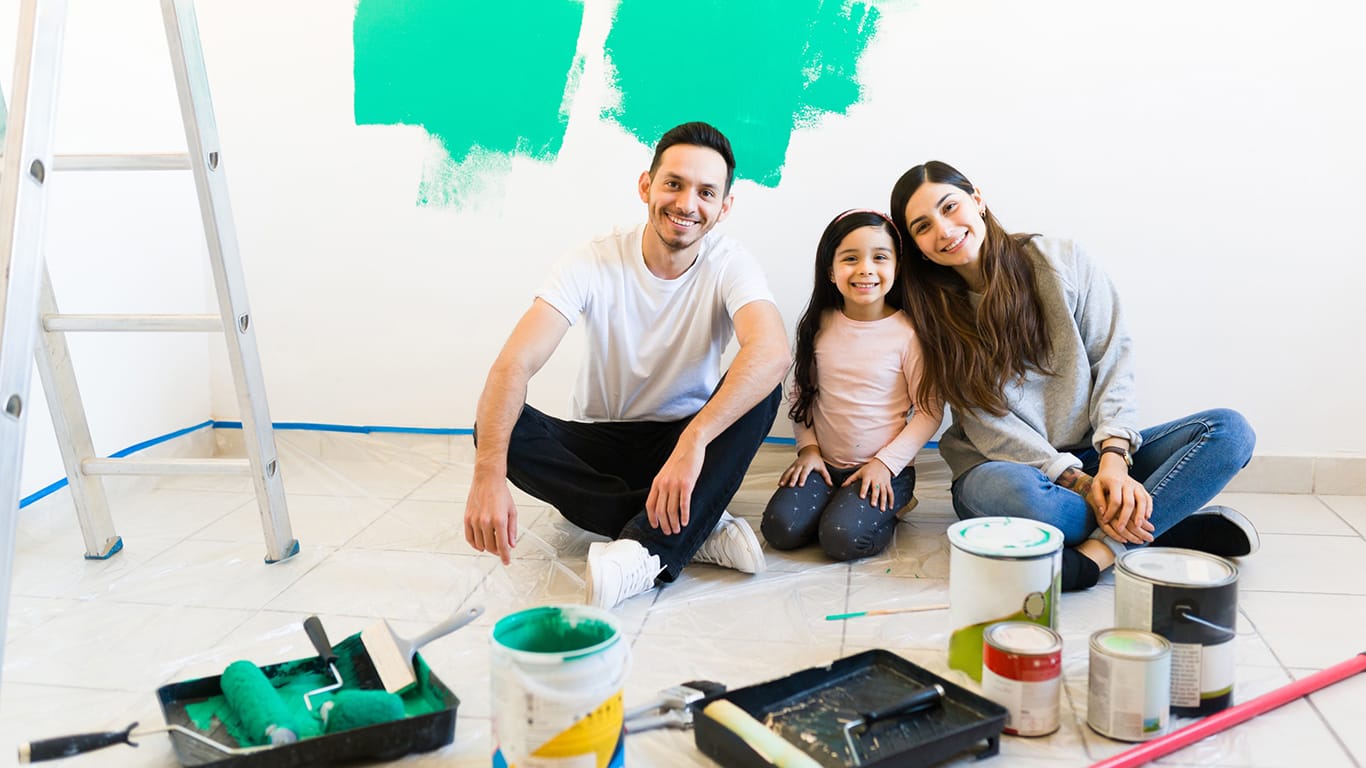Home decor tips: 16 things to know before you start
Transforming a house into a home requires thoughtful planning and strategic choices, as revealed by experts in home design and decoration. This comprehensive guide provides sixteen essential considerations that create both functional and beautiful living spaces. From lighting placement to furniture arrangement, these professional insights will help achieve intentional design that reflects personal style while avoiding common decorating pitfalls.
LOCAL NEWS: 10 things you may not know are manufactured in Arizona
INDUSTRY INSIGHTS: Want more news like this? Get our free newsletter here
- Test Paint Samples in Actual Rooms
- Decorate Intentionally as Life Unfolds
- Incorporate Natural Elements for Welcoming Atmosphere
- Trust Bold Colors to Tell Your Story
- Consider Scale and Proportion Before Purchasing
- Prioritize Function and Flow Over Color
- Plan Your Lighting First for Better Spaces
- Live in Spaces Before Making Design Decisions
- Embrace Patience Over Decorating Perfection
- Develop an Overall Vision Before Starting
- Create Negative Space Around Statement Pieces
- Simplify Your Space for Better Energy
- See How Light Transforms Colors Daily
- Verify Wall Paint Before Arranging Furniture
- Map Room Layout Before Buying Furniture
- Let Your Home Grow With You
Test Paint Samples in Actual Rooms
I wish I’d understood the power of paint testing in actual rooms before diving into my first major project. Early in my career, I selected what looked like a perfect warm white for a Nashville farmhouse based on tiny samples at the paint store. Once we got it on the walls, the north-facing light turned it into a cold, institutional gray that completely killed the cozy atmosphere we were building. We ended up repainting the entire main floor — added two weeks and several thousand dollars to fix what should have been right the first time.
Now I never specify a color without living with large samples (at least 2’x2′ boards) in the actual space for a full week. I had a client recently who was dead-set on a bold terracotta for their dining room until we tested it — the evening light made it look like a bad spray tan. We shifted two shades deeper and suddenly the room had that rich, enveloping quality she’d been chasing.
My advice: buy sample quarts of your top 3 choices and paint poster boards you can move around the room. Watch them at 8am, noon, 4pm, and after dark with your lighting on. Colors shift dramatically based on the direction your windows face and what time of day you’ll actually use the space. The $40 you spend testing will save you from a $4,000 repainting mistake — I’ve seen it happen more times than I can count.

Decorate Intentionally as Life Unfolds
When I decorated my first home, I was so eager to make it feel “done” that I rushed from store to store, checking things off a list instead of slowing down to truly see my space. Over time, I learned that creating a home you love isn’t about speed; it’s about patience, clarity, and intention. Here’s what I wish I’d known then.
1. Decorate Slowly and Intentionally
It’s tempting to want your home to look perfect right away, especially when inspiration is everywhere. But good design takes time. Live in the space first. Notice how you move through each room, what feels comfortable, and how the light changes. The most welcoming homes evolve slowly, layered with meaning and memories rather than impulse buys.
2. Think of Your Home as a Whole
When you decorate one room at a time without a plan, the result can feel disjointed. Instead, think of your home as a story where each room connects to the next. Choose a palette and textures that carry throughout, so there’s a natural flow from one space to another. Consistency creates calm.
3. Design for the Seasons
A well-loved home changes with the rhythm of the year. In Calgary, that might mean adding wool throws and velvet pillows in winter, then swapping them for linen and lighter tones in summer. Even small touches — fresh greenery, a new candle, a different area rug — can refresh your space and reflect the season.
4. Notice How Light Affects Your Mood
Lighting can transform a room more than any paint color. A space that feels bright and airy at noon might look dull by evening. Layer your lighting with a mix of dimmable lamps, sconces, and accent fixtures. Adjust as the day changes to create a space that feels inviting from morning to night.
5. Be Thoughtful with Plants
Plants breathe life into a home, but they’re not just accessories. They grow, need care, and sometimes outgrow their spot. Before filling your rooms with greenery, think about where natural light falls and how much maintenance you can realistically manage. Sometimes one well-placed plant makes a stronger statement than a dozen small ones.
Your home isn’t a project to complete; it’s a reflection of your life. Take your time, make intentional choices, and allow your home to evolve alongside you. When you do, every space will feel calm, authentic, and truly yours.

Incorporate Natural Elements for Welcoming Atmosphere
If I could go back, I would have started by bringing more natural elements into my home from the very beginning. There’s something timeless about the way greenery, wood textures, and natural light work together to create balance. Even a few fresh blooms or potted plants can shift the entire feeling of a space. They soften hard lines, add warmth, and make rooms feel alive.
What I didn’t realize at first was how much these small touches affect mood and energy. They don’t just make a room look good; they make it feel welcoming. That difference becomes more noticeable over time.
My advice is to think beyond furniture and paint. Incorporate details that remind you of nature and the outdoors. Choose materials and colors that create calm and reflect your personality.
Decorating isn’t only about style, it’s about atmosphere. When your home feels good to be in, everything else falls into place.

Trust Bold Colors to Tell Your Story
I wish I’d trusted color earlier. I played it safe with neutrals, thinking they’d make the space timeless, but it ended up feeling lifeless. Once I leaned into deeper tones and layered textures, the house finally felt like mine.
My advice: Design for how you want to feel, not just what you think will “resell.” The best homes tell your story, not the next buyer’s.

Consider Scale and Proportion Before Purchasing
I wish I had known how important scale and proportion are when decorating a home. It is tempting to buy pieces you like in isolation, but when the furniture doesn’t fit the room, everything feels off. A beautiful sofa or desk can look out of place if it is the wrong size, and once it is in the space you realize it changes how the entire room functions. When I was setting up my home office, I made that mistake. I bought a couch that looked great in the showroom, but completely overwhelmed the room. It made the space feel cramped and left little room for the desk and shelves I needed. Replacing it with a smaller, better-proportioned piece transformed the office. Suddenly, the space felt open, balanced, and comfortable to use on a daily basis. My advice is simple: measure first, design second. Map out your space and check that every piece works with the room, not just with your taste. Think about how people will move through the space, how furniture relates to the walls, windows, and each other, and how scale affects the flow. Taking time up front saves money and prevents frustration. You avoid costly returns and the sinking feeling of living with a room that never quite feels right. More importantly, it helps you create a home that feels intentional instead of cluttered, a place where every item has a purpose and the proportions make the whole room come together.

Prioritize Function and Flow Over Color
I wish I’d known that scale and circulation matter more than color. Most “why doesn’t this room feel right?” problems came from pieces that were too small or pathways too tight, not from the palette.
What I learned (the hard way):
-
A beautiful sofa that blocks a 900 mm walkway is a daily annoyance.
-
A rug that floats (too small) makes the whole room feel cheap, no matter the fabric.
-
Lights placed after furniture = glare, shadows, and endless lamp hacks.
Advice I give now:
-
Tape the plan before you buy. Use painter’s tape/newspaper to mark the sofa, dining table, bed and rug. Walk it for a day. If you can’t pass with a laundry basket comfortably, it’s the wrong size or layout.
-
Lock the big three first: sofa/bed, rug, lighting. If these are right, everything else is easy.
Size rules that rarely fail:
-
Living room rug: front legs of all seating on the rug; typical size 200×300 cm minimum, 240×340 cm ideal.
-
Coffee table: ~ 2/3 the sofa length, 35-45 cm clearance all around.
-
Dining table: 90 cm clearance to walls/cabinets; add 60 cm per seated person.
-
Pendant height: 70-85 cm above a dining table; island pendants ~75-90 cm.
Light in layers (then dim): ceiling ambient + task (lamps/under-cabinet) + accent (wall wash/sconces). Aim for 2700-3000 K at night; use dimmers everywhere.
Test color at full scale. Paint an A3/A2 swatch on two walls and look at it morning, noon, night. Lighting changes everything.
Sequence purchases: anchor pieces first, lighting second, window treatments then side tables/storage, lastly art/textiles. This prevents mismatched “fill-ins.”
Spend where hands and eyes land: sofa, mattress, task lights, door handles. Save on side tables, occasional chairs, decor.
Treat the room like a city plan, not a collage. Streets (circulation) and blocks (major pieces) come first; the murals (color and styling) come last.

Plan Your Lighting First for Better Spaces
I wish I’d focused on lighting before anything else.
I spent months picking paint colors, furniture, and decor. Everything looked great in my head. But when I finished, the rooms felt flat and uninviting.
The problem was lighting. I only had overhead fixtures, and they cast harsh shadows everywhere. The carefully chosen paint looked dull. The furniture didn’t pop the way I expected.
I added floor lamps, table lamps, and some wall sconces. The difference was immediate. The same room suddenly felt warm and complete.
My advice: plan your lighting early. Think about ambient lighting for overall brightness, task lighting for specific activities, and accent lighting to highlight features you love.
Don’t rely on just one overhead light. Layer different sources at different heights. It makes a huge difference in how your space feels.
If I could do it again, I’d start with lighting and build everything else around it.

Live in Spaces Before Making Design Decisions
One thing I wish I had known before I started decorating my current home is how important it is to live in the space for a while before making big design decisions. When I first moved in, I was eager to make everything look “finished,” so I rushed into choosing colors, furniture, and layouts. Later, I realized that my lifestyle and the way I used each room evolved over time, and some of my early choices didn’t really fit how I actually lived. My advice to others would be to take their time, observe the light, flow, and feel of the space before committing to major purchases or design themes. Let your home tell you what it needs rather than forcing a style too quickly.

Embrace Patience Over Decorating Perfection
I wish I’d known that decorating a home isn’t about perfection but rather it’s about patience. When I bought my first place, I wanted it to feel “finished” right away. I went out, bought new furniture, and tried to match what I’d seen in design magazines. Within a year, half those pieces didn’t fit my life anymore. My taste changed, my needs changed, and I realized I’d been decorating for some imaginary version of myself instead of the way I actually lived.
If I could start over, I’d buy my big pieces secondhand. Not just to save money, but because your style will evolve no matter how sure you are in the beginning. That couch you think you’ll love forever might feel wrong next year. Buying pre-loved pieces gives you flexibility and you can experiment, reupholster, or let something go without guilt.
Another thing I learned is to reconsider before rejecting what’s offered to you. When friends or family give you hand-me-downs, don’t write them off too fast. A little paint, new hardware, or fresh fabric can completely change a piece. Some of my favorite items in my home started out as things I didn’t want. For example, a battered sideboard that became a coffee bar, an old chair that we stripped and painted. Those pieces have character that store-bought furniture never could.
And honestly, it’s okay to live with imperfection. There’s beauty in a mismatched table or a couch that doesn’t quite fit your vision yet. Your home should be a reflection of your story, not a showroom. Let it grow with you.

Develop an Overall Vision Before Starting
For me personally, I’d say I wish I had a better idea of an overall look or decor/color scheme before I started decorating my current home. I sort of jumped into things room by room, and now find myself wishing I’d shot for a more unified look and spent some more time figuring out what that would look like and how each room would contribute. My best advice here is to take your time when you’re decorating a new home, including thinking about what you’d like the overall vibe to be, and how you’d like each room to contribute.

Create Negative Space Around Statement Pieces
You don’t need more furniture. You need better negative space around the pieces you love. Control what the eye “lands” on. Give one piece the starring role, like a console with bold grain. Let nearby items go quieter. If everything shouts, nothing speaks.

Simplify Your Space for Better Energy
I wish I had known how much a home’s energy depends on simplicity. Early on, I over-decorated, placing various things in the house because they looked nice, but what I was really doing was losing the potential to create a calm environment. After removing what was not needed, the rooms felt much lighter and the spaces became more in line with the way I wanted to live.
From this experience, I would tell others to decorate their houses as they decorate their minds, remove clutter before adding beauty. Choose colors, textures and layouts that make the breath slow and the body soften. I believe that a peaceful space supports balanced thoughts and steadiness of emotions.

See How Light Transforms Colors Daily
One thing I wish I had known before decorating my home is how much lighting changes everything.
A paint color that looked perfect in the store looked completely different once I got it on the walls at home. The same goes for furniture and finishes.
My best advice is to test everything in your space first. Look at it in daylight and at night before making a decision.
Lighting can make or break a room. Get that right, and even a simple design will feel warm and well put together.

Verify Wall Paint Before Arranging Furniture
Make sure you’re happy with the current color of paint on the walls! There’s nothing more aggravating than needing to exile all your furniture because you’re unhappy with your current shade of beige!
Map Room Layout Before Buying Furniture
I wish I had known the value of planning flow and scale before buying furniture. I bought pieces that looked good individually but crowded rooms or clashed with proportions.
Plan each room’s layout first. Measure spaces and consider how items interact. Think about traffic, light, and focal points. Choose pieces that fit the room, not just your style.
Test colors, textures, and lighting in small areas before committing. Use sample swatches and temporary setups. Prioritize function over decoration.
If you decorate your home, plan carefully, measure thoroughly, and visualize the space fully. Avoid impulse buys. Small planning steps save time, money, and frustration.

Let Your Home Grow With You
Honestly, if I could go back, the first thing I’d tell myself is to slow down and let the home grow with me. When I first moved in, I had this wild idea that everything had to be perfect immediately. Every corner filled, every wall decorated, every chair and pillow “just right.” I rushed, made impulsive purchases, and honestly, a lot of it didn’t even feel like me once it was all in place. I look at some of those early choices now and cringe a little — but at the time, I thought that was how decorating worked.
I’ve learned that your home really evolves with you. The first few months are like a testing ground. You start noticing what spaces you actually use, what corners make you happy, and what furniture really suits your lifestyle instead of just your Pinterest board. That realization changed everything for me. I started paying attention to the little moments: the sunlight hitting the sofa in the morning, the way I like to move around in the kitchen, or the cozy nook I naturally gravitate to with a cup of coffee. Those tiny observations became my guide, not a magazine layout or a trendy color palette.
My advice for anyone starting out: don’t rush. Let it breathe. Let it tell you what it needs. And don’t stress about things “matching” perfectly. A little mismatch, a few odd pieces, or even a mistake here and there — that’s what makes a home feel lived-in and real. Those quirks are the soul of a space, the parts that make you smile when you walk in.
Also, don’t underestimate the value of patience. Sometimes it takes months to find the exact chair, the perfect lamp, or that rug that just fits. And that’s okay. Really, it’s better than rushing into something you’ll regret. Over time, all the little choices — some spontaneous, some carefully planned — come together in a way that feels effortless and, most importantly, like you.
Decorating isn’t just about style. It’s about creating a home that reflects who you are and how you live. It’s messy, it’s slow, it’s trial and error — but that’s the beauty of it. Embrace the process. Your home will end up being way more “you” than anything you could force at the start.






